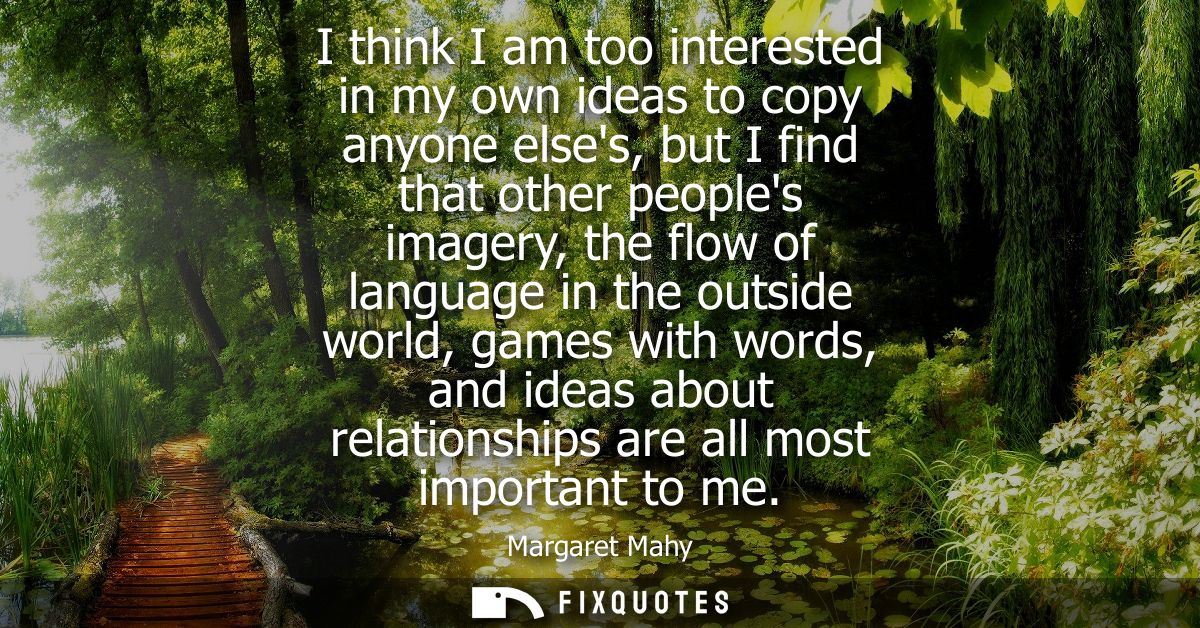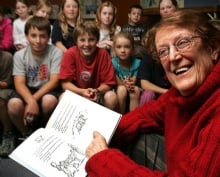"I think I am too interested in my own ideas to copy anyone else's, but I find that other people's imagery, the flow of language in the outside world, games with words, and ideas about relationships are all most important to me"
About this Quote
Margaret Mahy expresses a deep-seated originality in her creative process, acknowledging an intrinsic drive to pursue her own ideas rather than replicate the work of others. Rather than relying on imitation, she suggests her fascination lies in the development of personal concepts and imaginative exploration. This approach reveals a commitment to authenticity and innovation, characteristics often valued in writers and artists who strive to offer unique perspectives through their work.
However, Mahy also recognizes the significant role that external influences play in shaping her creativity. Other people's imagery, meaning vivid descriptions or symbolic elements found in the works of fellow creators, becomes a source of inspiration, serving as sparks that ignite her own imaginative thought processes. She appreciates the rhythm, structure, and expressiveness found in everyday language, observing how the flow of words in the world around her can influence her stylistic choices and expand her creative horizons. This openness to the influence of language underscores her sensitivity to the nuances and cadences that make communication both an art and a tool for connection.
Games with words, likely referring to playful experiments with language such as puns, riddles, or creative wordplay, are also highlighted as vital for her creative toolkit. These linguistic explorations encourage flexibility in thought and style, promoting a sense of joy and discovery in her writing. Lastly, Mahy points to ideas about relationships, the complex dynamics between people, as a core source of inspiration. This focus reveals her interest in the human experience, emotional depth, and the ways in which connections between individuals can be explored and expressed through stories.
Ultimately, Mahy's reflection illustrates a balance between self-reliance and receptiveness. While she prioritizes her own imagination, she remains enriched by the world’s linguistic and interpersonal diversity, demonstrating how creativity thrives on a continual interaction between personal vision and communal influence.
More details
About the Author

